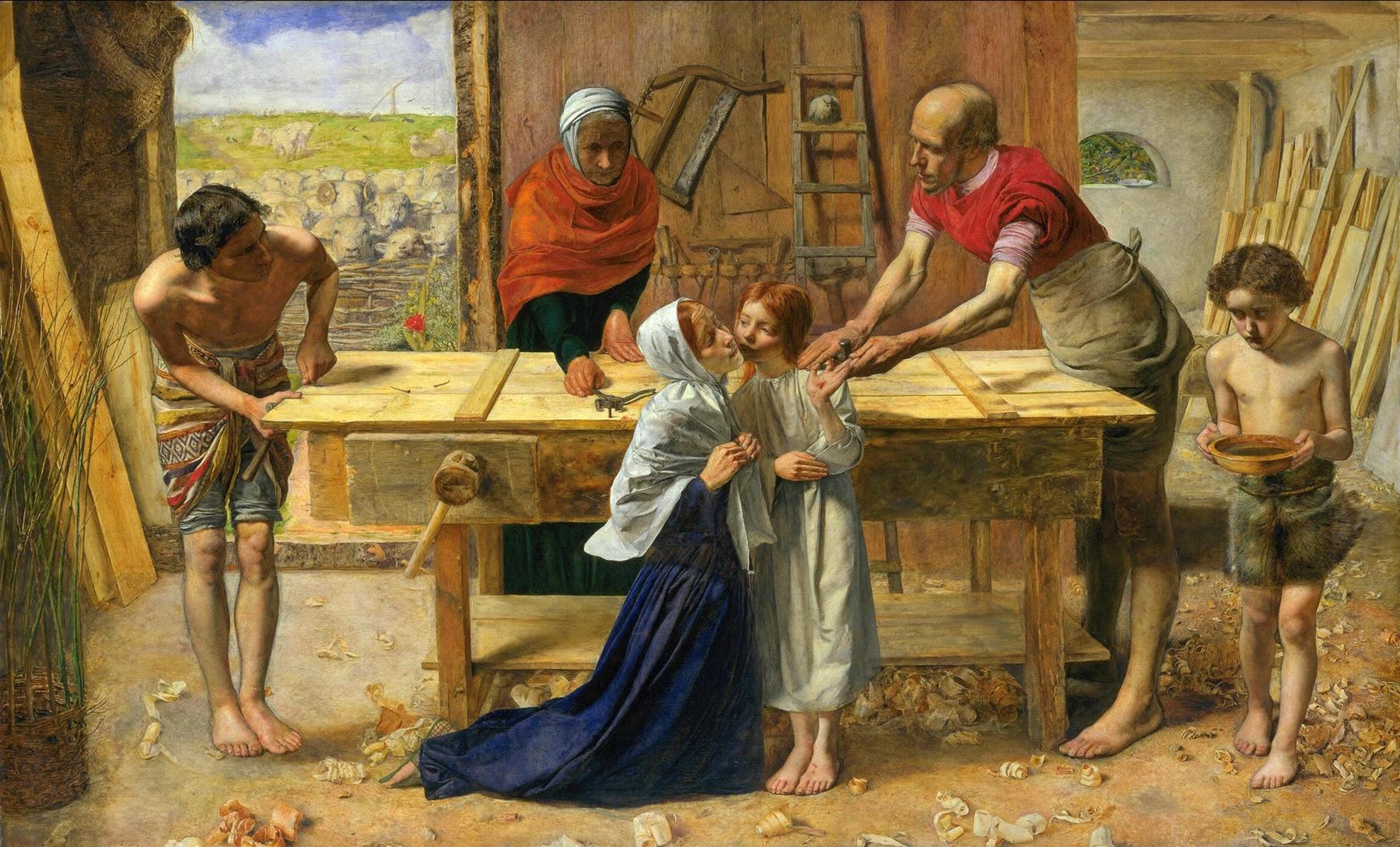Created by Brielle Tidwell on Sat, 11/27/2021 - 11:40
Description:
John Everett Millais was one of the founding member of the Pre-Raphaelite brotherhood, a group of artist across all mediums that sought to create works that were true to nature, full of color, and had immense detail. All of which can be seen in Christ in the House of His Parents (‘The Carpenter’s Shop’)
The piece depicts Jesus Christ as a young boy in his father’s carpenter shop. While work goes on around him, he receives a kiss from his mother. True to form, Millais is using a great deal of detail in this piece. Many of the details found also work as Christian symbols. The triangle above the boys head representing The Holy Trinity, the nail marks on the young Christ hand, and even the bowl of water by a potential St. John the Baptist figure.
The initial reaction by the public and the press was one of disgust, seeing the painting as an act of heresy on Millais’ part. It was far from customary to depict Christ nor his family, in any ordinary way, let alone in a dirty, poor place of work. One of the harshest critiques of the piece was Charles Dickens, a key author of our readings. Dickens wrote of the piece as showing Christ to be “a hideous, wry-necked, blubbering, red-headed boy, in a bed gown.” (Household Words, 15 June 1850, as cited in Tate).
Dickens is not the only author of our semester readings connected to this piece. The unique relationship between nature and God explored by the Pre-Raphaelites and in this particular work of Millais can also be found in our readings such as Jane Eyre and North and South. Both have unique takes on religion, but both are veering into a more personal approach with God, and going further away perhaps from the traditional relationship. There is also a direct connection between Christina Rossetti and Millais. Christina Rossetti, the author of readings such as “The Goblin Market”, was not an official member of the Brotherhood, but her brothers were founding member with Millais, and her work also reflects the themes and styles I previously mentioned, that the Brotherhood was exploring.
Work Cited
Fowle, Frances. “'Christ in the House of His Parents ('the Carpenter's Shop')', Sir John Everett Millais, Bt, 1849–50.” Tate, 2000, https://www.tate.org.uk/art/artworks/millais-christ-in-the-house-of-his-....
Millais, John Everett. Christ in the House of His Parents ('The Carpenter's Shop'). 1849-50 Tate Britain, London. tate.org, https://www.tate.org.uk/art/artworks/millais-christ-in-the-house-of-his-...
Copyright:
Associated Place(s)
Part of Group:
Featured in Exhibit:
Artist:
- John Everett Millais


